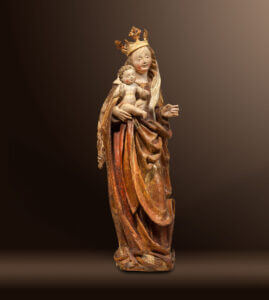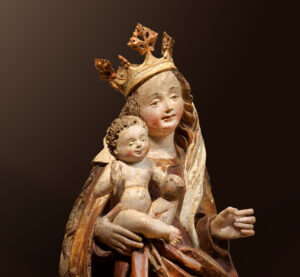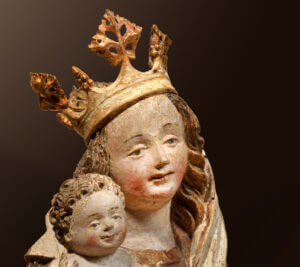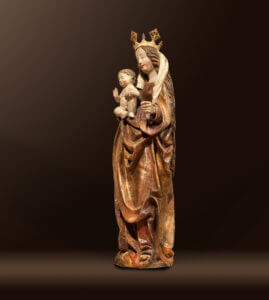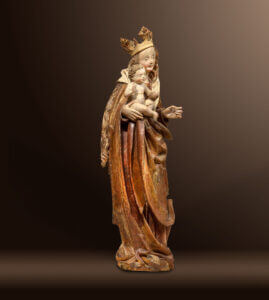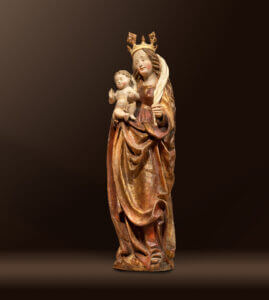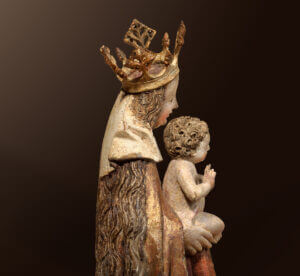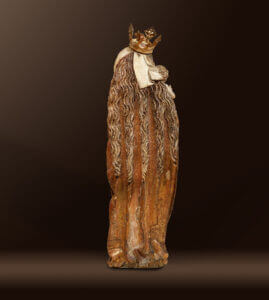This masterfully carved, full-round Madonna was created around 1515-20 in the Bavarian region,
executed in lime wood. With a size of 60 cm and a setting preserved in the original, the individual playful details are particularly well accentuated.
Mary’s body is held in a slight S-swing, with the naked baby Jesus appearing to balance on her right hip. The mother is holding her child close to her; in her left hand she was probably originally holding a separately made attribute. Jesus is shown with boldly bent feet, holding a golden ball or fruit in his left hand and his right hand raised in a gesture of blessing. Hereby he refers to his position as world ruler. Both figures look with slightly lowered eyelids at the same point diagonally below, suggesting an elevated site where the Madonna originally stood. The viewers thus looked up at the figure, designed to be seen from below, and established a relationship of gaze, especially with Mary as the intercessor. Both figures have lovely faces with accentuated red cheeks and a high forehead, according to the Gothic ideal of beauty. Mary is particularly highlighted by the sculptural masterpiece of the high crown with Gothic carving in the form of crucifers, under which a long white cloth playfully winds through as a veil. Also impressive in this context is Mary’s elaborately executed hair in the Gothic manner, which flows down her back in long waves and multiple strands, resting here on the folds of the heavy robe. This stylization was also carried over into the execution of the long cloak that curves around Mary’s body. In dynamic form, the drape breaks into angular bowl pleats that remain centered on her lower body; a dramatic diagonal pleat leads into an ear pleat on her left leg. The suggested volume is also expressed in the deep furrows to Mary’s undergarment, under which her shoe tips peek out. Another fold hides an exciting detail on the surface of the floor: Mary is standing on a crescent moon with a beturbant face with dark skin resting on it.
The genre of crescent moon Madonnas is characteristic of the late Gothic period.
The image of Mary refers to the Revelation of John and the appearance of the apocalyptic woman mentioned there: “Then a great sign appeared in heaven: a woman clothed with the sun; the moon was under her feet and a crown of twelve stars on her head.” (Rev. 12:1). In the vernacular it is said that the execution of the face refers to the Turkish siege, or else that here the carver immortalized himself with a portrait. A comparable representation of a crescent moon Madonna can be found in the Überlingen Cathedral, dated around 1510. However, the figure presented here testifies to an extremely great care in the execution, through which the carving master created a museum piece that, due to its elegant size, probably served for the private devotion of a wealthy client.
